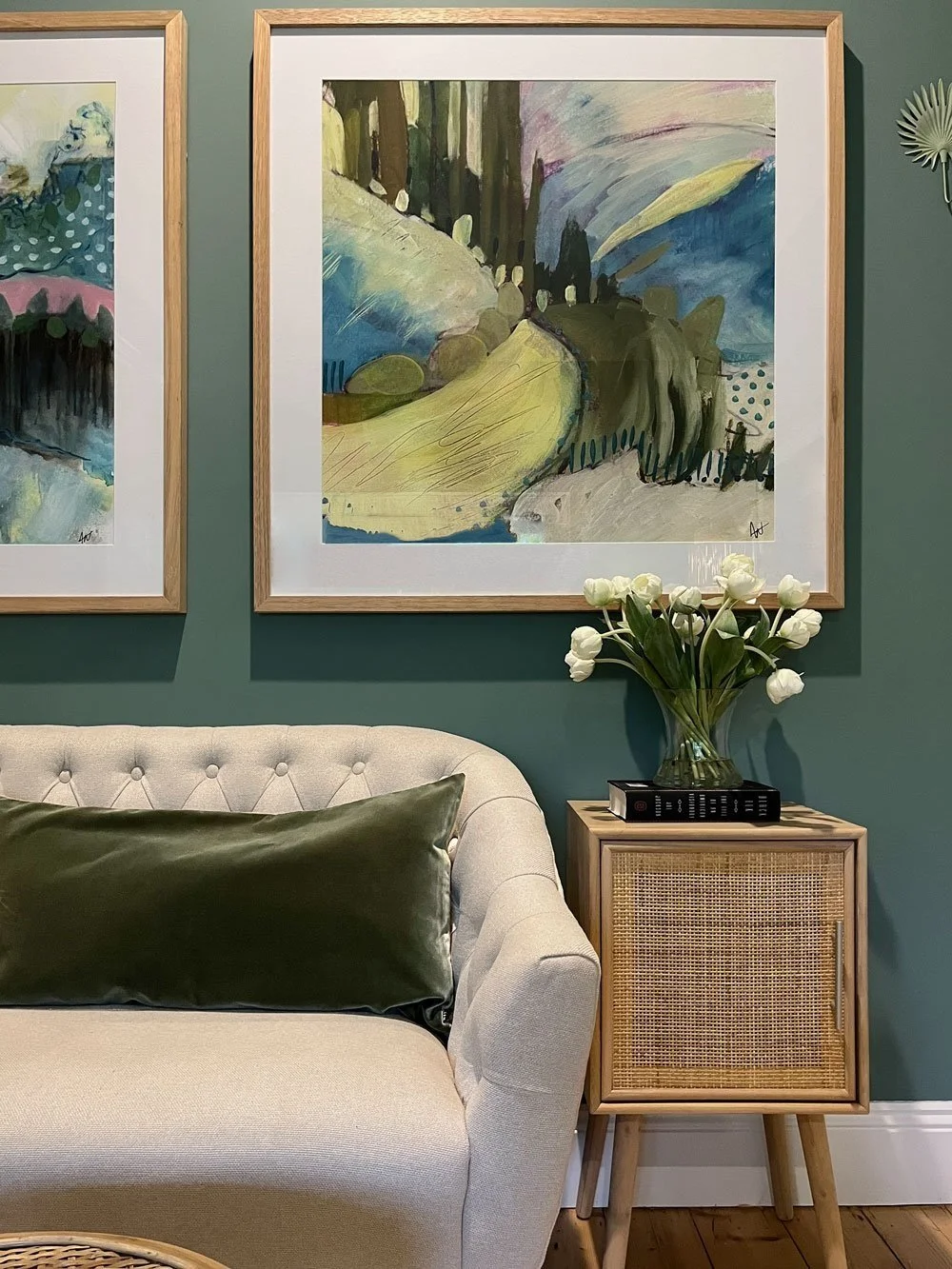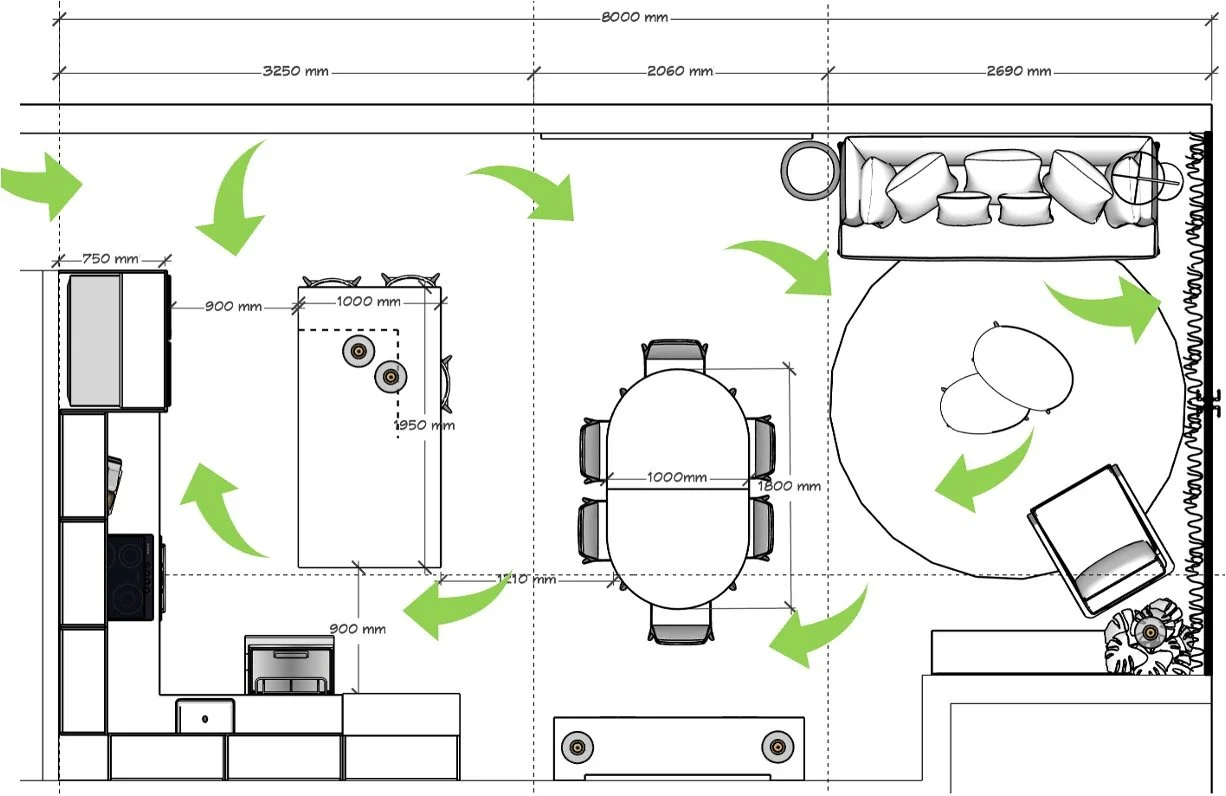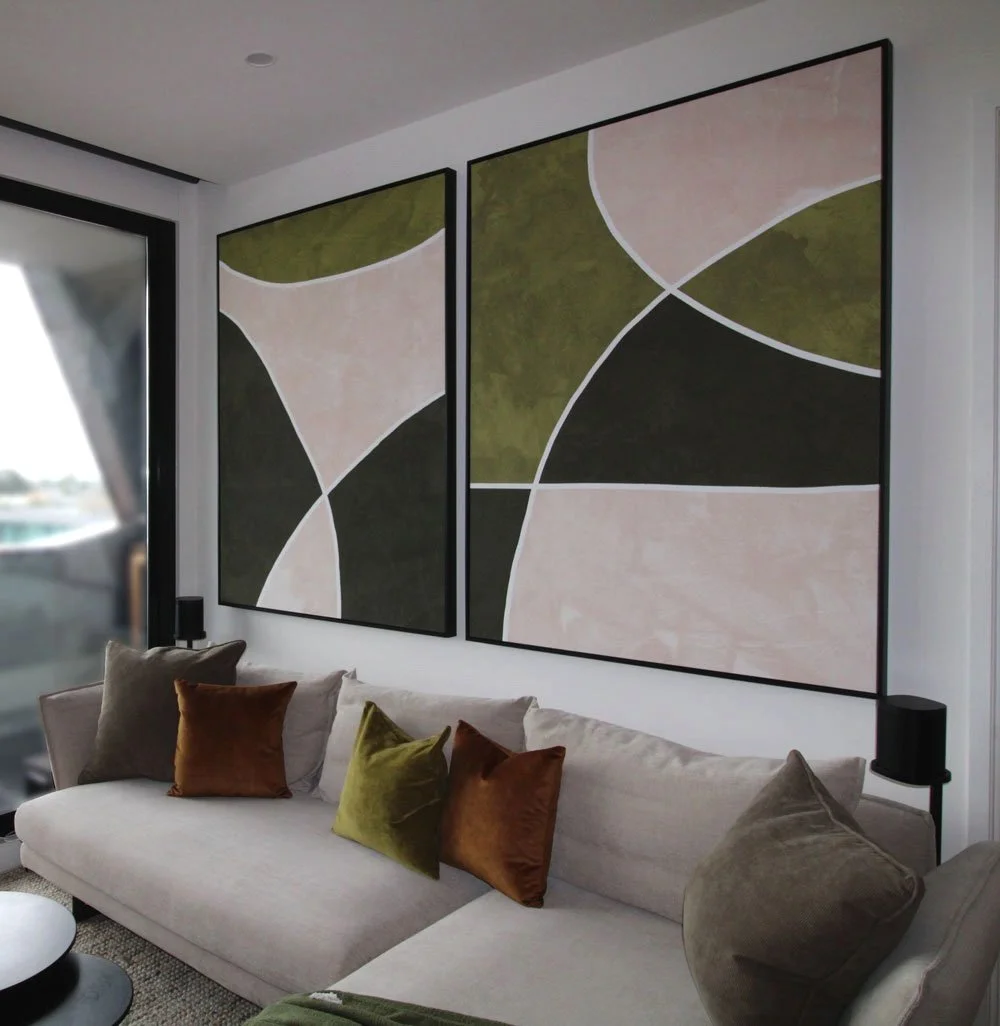What are my top tips for furniture layouts?
My advice is to start by choosing a focal point.
What is a focal point? It’s a design element or feature in a room that draws the eye and creates a sense of visual interest. It’s the centre of attention and the one element that stands out the most in the space. A well-designed focal point helps to enhance the overall look and feel of a room, creates a sense of balance and harmony, and adds visual interest.
A focal point can take many different forms. It could be a piece of artwork, a fireplace, a large window with a beautiful view, a unique piece of furniture, or an architectural detail. It’s up to you to decide which feature you’d like to stand out and create a sense of visual interest in your room.
If there’s no easy target, you can create your own focal point and use design elements like colour, texture, lighting, and furniture arrangement to support your choice. By highlighting a particular element in a room and drawing the eye towards it, you can create a sense of balance and harmony in the space.
With these 5 tips, you can create a focal point that adds visual interest and enhances the overall design of your space:
Make it unique: Incorporate unique elements, like an oversized piece of artwork or a bold piece of furniture, to create a standout focal point.
Highlight with lighting: Use lighting to draw attention to the feature, like a spotlight or accent lighting.
Use contrasting colours: Select a colour that contrasts with the surrounding walls and furnishings to make it stand out.
Add texture: Make the feature more visually appealing, by adding a decorative rug or textured wallpaper close to it.
Arrange furniture: Place the sofa, chairs and side tables around the feature in a way that draws attention to it.
Remember, the focal point should be the centre of attention in the room, but it should also work in harmony with the rest of the design elements.
Once you’ve determined your focal point, arranging the rest of the space gets easier.
Your floor plan needs to consider ease of movement as well as scale and proportion.
Placing large art above an over-sized sofa make sit appear smaller.
Things to consider are:
Traffic flow: Ensure that the furniture arrangement allows for easy movement around the room without creating any obstacles or dead ends.
Conversation areas: Arrange seating in groups to create comfortable conversation areas. Face chairs and sofas towards each other to encourage your guests to interact.
Balance: Distribute furniture evenly throughout the space to create a balanced look. Use a mix of large and small pieces to create visual interest. Don’t place all of the large, heavy pieces or strong colours on one side, or you risk “tipping” the room, which means your design is unbalanced.
Consider scale and proportion: Make sure that the size of the furniture is proportional to the size of the room. You can play with scale to make items appear larger or smaller. For example, to make something appear smaller, place something overscale next to it.
Define spaces and zones: Use rugs and lighting to define different areas in the room. This can help create a cozy and intimate feeling in larger rooms.
Experiment: Don't be afraid to experiment with different furniture layouts until you find the one that works best for your space and lifestyle.
The best furniture layout depends on your personal preferences, how you live, and the size and shape of your room. With these tips, you should be able to create a furniture layout that is both functional and visually pleasing.



